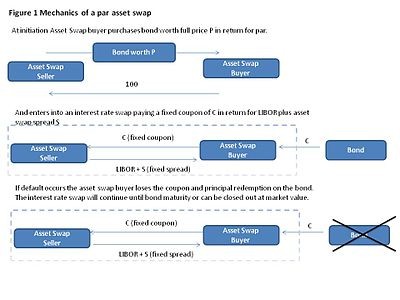The basic mechanics of FX swaps and crosscurrency basis swaps
Post on: 20 Май, 2015 No Comment

1 September 2008
(Extract from pages 73-86 of BIS Quarterly Review, March 2008)
An FX swap agreement is a contract in which one party borrows one currency from, and simultaneously lends another to, the second party. Each party uses the repayment obligation to its counterparty as collateral and the amount of repayment is fixed at the FX forward rate as of the start of the contract. Thus, FX swaps can be viewed as FX risk-free collateralised borrowing/lending. The chart below illustrates the fund flows involved in a euro/US dollar swap as an example. At the start of the contract, A borrows X·S USD from, and lends X EUR to, B, where S is the FX spot rate. When the contract expires, A returns X·F USD to B, and B returns X EUR to A, where F is the FX forward rate as of the start.
FX swaps have been employed to raise foreign currencies, both for financial institutions and their customers, including exporters and importers, as well as institutional investors who wish to hedge their positions. They are also frequently used for speculative trading, typically by combining two offsetting positions with different original maturities. FX swaps are most liquid at terms shorter than one year, but transactions with longer maturities have been increasing in recent years. For comprehensive data on recent developments in turnover and outstanding in FX swaps and crosscurrency swaps, see BIS (2007).
A cross-currency basis swap agreement is a contract in which one party borrows one currency from another party and simultaneously lends the same value, at current spot rates, of a second currency to that party. The parties involved in basis swaps tend to be financial institutions, either acting on their own or as agents for non-financial corporations. The chart below illustrates the flow of funds involved in a euro/US dollar swap. At the start of the contract, A borrows X·S USD from, and lends X EUR to, B. During the contract term, A receives EUR 3M Libor+ α from, and pays USD 3M Libor to, B every three months, where α is the price of the basis swap, agreed upon by the counterparties at the start of the contract. When the contract expires, A returns X·S USD to B, and B returns X EUR to A, where S is the same FX spot rate as of the start of the contract. Though the structure of cross-currency basis swaps differs from FX swaps, the former basically serve the same economic purpose as the latter, except for the exchange of floating rates during the contract term.
Cross-currency basis swaps have been employed to fund foreign currency investments, both by financial institutions and their customers, including multinational corporations engaged in foreign direct investment. They have also been used as a tool for converting currencies of liabilities, particularly by issuers of bonds denominated in foreign currencies. Mirroring the tenor of the transactions they are meant to fund, most cross-currency basis swaps are long-term, generally ranging between one and 30 years in maturity.














